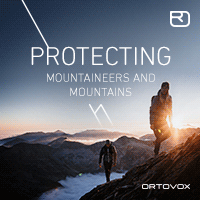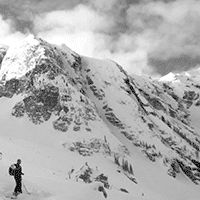Ladder to be installed on Mt. Everest?
Everest may have ladder installed to ease congestion on Hillary Step, the move is welcomed by Nepalis hoping to expand climbing industry but opposed by mountaineers who want to preserve challenge.

It was the final obstacle, the 40 feet of technical climbing up a near vertical rock face that pushed Sir Edmund Hillary to the limit. Once climbed, the way to the summit of Mount Everest lay open.
Now, almost exactly 60 years after the New Zealander and his rope-mate, Sherpa Tenzing Norgay, stood on the highest point in the planet, a new plan has been mooted to install a ladder on the famous Hillary Step, as the crucial pitch at nearly 29,000ft has been known since it was first ascended. The aim is to ease congestion.
"We are now discussing putting a ladder on the Hillary Step but it is obviously controversial," said Dawa Steven Sherpa, who runs commercial expeditions on Everest and is a senior member of the Expedition Operators Association in Nepal.
This year, 520 climbers have reached the summit of Everest. On 19 May, around 150 climbed the last 3,000ft of the peak from Camp IV within hours of each other, causing lengthy delays as mountaineers queued to descend or ascend harder sections.
"Most of the traffic jams are at the Hillary Step because only one person can go up or down. If you have people waiting two, three or even four hours that means lots of exposure [to risk]. To make the climbing easier, that would be wrong. But this is a safety feature," said Sherpa, who co-ordinates the work to prepare the traditional route up the mountain for clients who pay between $45,000 and $75,000.
The plan has received some support from the world's mountaineering authorities.
Frits Vrijlandt, the president of the International Mountaineering and Climbing Federation (UIAA), said the ladder could be a solution to the increasing numbers of climbers on the mountain.
"It's for the way down, so it won't change the climb," Vrijlandt told the Guardian.
It is unlikely, however, that tired ascending climbers close to their ultimate goal will spurn such an obvious aid at such an altitude.
After the climb, Hillary described his concern at seeing the steep cliff so high on the mountain during the first ascent. He managed to climb it using a crack to one side. Tenzing Norgay followed and the pair continued to the summit. The news of the successful ascent by the British expedition reached London in time for Queen Elizabeth's coronation three days later.
There are also plans to introduce more rigorous traffic controls on the so-called fixed ropes, which run almost from base camp to the summit and are fixed by specialist sherpas. One rope for climbers on the way up and one for those descending are to be installed.
But though such innovations are anathema to many purist climbers, they are welcomed by some sherpas.
Paid around $7,000 for guiding a client to the summit, the sherpas, almost all from local villages, are regular casualties on the mountain. Nine people have died on Everest this year, including two veteran sherpas. A brawl involving western climbers and sherpas at over 20,000ft on the peak made headlines.
Apa Sherpa, who climbed Everest a record 21 times before retiring in 2011, described the Hillary Step as "very hard" and said a ladder was a good idea.
Pertemba Sherpa, who played a key role in the British expedition led by Sir Chris Bonington, which climbed Everest's south-west face for the first time in 1975, said that the security of the sherpas working on the mountain should be paramount.
"The route is changing, there is more rock, less ice and snow. it's very dangerous. For [the] safety of sherpas, this is good," the 65-year-old said.
Many Sherpas and other Nepalis want to develop the industry of guiding clients to the top with minimal risk to all involved, while many mountaineers want to preserve Everest as a climbing challenge that demands a significant level of experience, technical competence and acceptance of risk.
"The mountain has become a commodity, to be bought and sold like any other," Stephen Venables, the first Briton to climb Everest without oxygen, told the Guardian.
One further suggestion is for the Nepali authorities to vet climbers to ensure they have a basic level of competence.
"We must be inclusive but Mount Everest is not a place for training people who only know ice as cubes in a glass in how to use an ice axe and crampons," said Vrijlandt, the UIAA president.
Story and photo from the Guardian UK.







